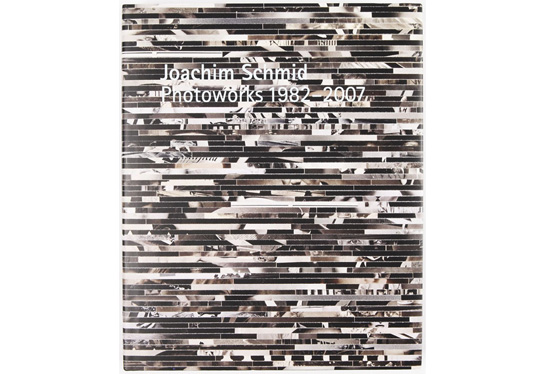Review: Joachim Schmid - Photoworks 1982-2007

Hardly a day goes by without the concern being voiced that there are too many photographs in the world. Earlier this year, I wrote about 60 billion photos on Facebook alone (it must be more by now, but does the number really matter any longer?). I personally don’t think there are too many photos in the world. This is probably because I don’t even know what my benchmark would be. I know what happens when I drink too much coffee or alcohol or eat too much candy, but I yet have to notice any problems when looking at large numbers of photographs. But still. If we get back to the complaint about all those photographs, the first thing we might want to realize is that Joachim Schmid talked about too many photographs in the world before Facebook was born. In 1989, he said “No new photographs until the old ones have been used up!” (quoted from the book I’m going to review here) (more)
I’m a big fan of Schmid’s “until the old ones have been used up”: It really hints at a problem, and it also points at what lies at the heart of his work. A lot of photography is produced mindlessly and consumed just like that. While a huge brouhaha is made about so-called art photography, most of the photography we are exposed to on a daily basis is not even recognized as such. It’s overlooked, ignored. This is where Schmid comes in.
Joachim Schmid - Photoworks 1982-2007 is already a few years old, but since I just bought my own copy I thought I’d review it here regardless. The book provides a wonderful introduction to the work of someone who has been dealing with and looking at enormous amounts of photography for many years, approaching things with a refreshing combination of intelligence and wit. It features one dozen of the artist’s projects, almost all of them involving other people’s photographs.
Schmid’s website offers a great overview of the work, the book adds a large number of truly amazing articles about it, along with, of course, images (lots of them). It starts out with “Images from the Street” - found photographs or maybe more accurately very literally found photographs: Schmid picked them up from the street. Discarded photographs, often torn up (Schmid re-assembles them where possible). There also is a body of work comprising prints of found negatives.
My absolute favourite might be the “Erste allgemeine Altfotosammlung.” Back in the 1980’s, when Germany first erupted in a wave of recycling fever, Schmid put an official looking ad up in newspapers, asking people to send him their photographs or negatives so that they could be recycled properly. Germans being Germans, when things look official, they are being taken seriously, so people did indeed send in large amounts of photo material. More fodder for Schmid’s image machinery. So there are torn photographs, re-assembled, with an official looking stamp underneath (testifying that the photograph has indeed been properly recycled), and there are images assembled from studio-portrait negatives that the studio had cut in half, the latter being somewhat reminiscent of the work of British artist John Stezaker.
The secret of this work is that it needs to be approached with an open mind. You literally first have to see what Schmid is actually doing. And then you read the essays and you realize that there are intelligence, wit and humour at play, along with enormous visual awareness. Schmid is very aware of the issue of authorship, for example. All the issues that have recently come to the surface again - authorship, significance of images, value of images, etc. - they’re all in here. So I really couldn’t recommend Joachim Schmid - Photoworks 1982-2007 more - it’s a fantastic book.
Ultimately, the book also has me convinced, now more than ever, that there truly aren’t enough photographs in the world, yet - the more there are, the more material there is for artists like Joachim Schmid.
Joachim Schmid - Photoworks 1982-2007, images/collections by Joachim Schmid, essays by Joan Fontcuberta, Frits Gierstberg, Stephen Bull, Jan-Erik Lundström, Val Williams, John S. Weber, 288 pages, Steidl/Photoworks UK/Tang Museum, 2008
Find my photobook presentation of the book here.